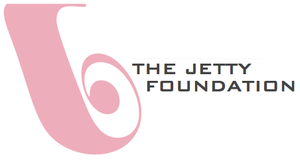
I’ve begun speaking to enough people on the ground that it wouldn’t have gone unnoticed for much longer, but now word’s got out that I’ve established a foundation to bid on the site of Robert Smithson’s Spiral Jetty, a 10-acre parcel of State-owned lakebed in Great Salt Lake. In the simplest terms, I’m bidding for the lease because it seems irresponsible not to.
Several weeks ago, it was reported that the Dia Foundation’s lease had expired, and it was not immediately clear that the Utah Department of Natural Resources would grant Dia a new lease as a matter of course. When I called the Department to ask to be notified if the State decided to open the lease for competitive bidding, I was told I’d be added to the list. At that moment, it occurred to me that parties other than Dia were expressing interest in the lease.
As weeks passed, with no resolution, the possibility that Dia might not automatically get a new lease grew, along with the uncertainty of Spiral Jetty‘s fate. Once I received assurance that submitting an application would not automatically trigger an open bidding situation, I felt the responsible thing to do was to present apparently undecided State officials with the most constructive, credible set of choices: the status quo, or an independent, locally based institution whose purpose is to manage the site and collaborate with the artwork’s owners as they fulfill their own missions.
Let me underscore their continued involvement, because it was also important, whatever the status of the lease or the site, that there was an acknowledgement in the process of Dia’s undisputed ownership of the Spiral Jetty artwork, and the Smithson Estate’s ownership and control of the intellectual property rights associated with it. Any responsible proposal, I felt, should endeavor to support and facilitate Dia’s stewardship of Spiral Jetty, not usurp it.
In trying to craft the most effective alternative to the status quo ante, the importance of local engagement came quickly and repeatedly to the fore. There are many significant issues that directly impact Spiral Jetty in its site. To constructively address them, increased local engagement seems critical: environmental, land use, and lake management initiatives; economic development, tourism and energy issues; and art and cultural institutions within the State.
The Jetty Foundation’s mission is three-fold:
- Support the wise stewardship of Robert Smithson’s Spiral Jetty artwork in accordance with artist’s vision.
- Facilitate informed, productive engagement among Spiral Jetty stakeholders, including the artist’s Estate and the Dia Foundation; State and local government entities; lake and land use, tourism, economic development, environmental and community organizations; and arts, museum and cultural institutions within Utah and beyond.
- Support and encourage a greater appreciation of Spiral Jetty in the specific context the artist chose for it: in Utah, in Great Salt Lake, at Rozel Point.
If lease evaluations or bidding proceeds, the Foundation will expand its board to include leaders and stakeholders in Utah as well as recognized figures from the larger art and museum community.
If the State awards The Jetty Foundation the site lease, the board will have responsibility for managing the lease and for identifying and addressing issues that affect the site, in collaboration with the owners of the artwork, who would remain the key stewards of the artwork itself. The details of the board makeup and how the Foundation would support and work together with Dia and the Estate are all things to be figured out if or when it’s necessary.
As for the no-doubt invigorating conceptual implications any such arrangement might entail, I will not speculate. It was precisely the recognition that the administrative uncertainty surrounding Spiral Jetty called for more action and less sideline rumination that compelled me along the current course.
If the State decides that administration of the site by a locally engaged institution is preferable to the previous set-up, I want to make as certain as I can that such an organization operates wisely, effectively, and with respect for Dia’s and the Estate’s standing regarding the artwork. Should the State decide to award Dia a new lease on the site, I would hope that the Foundation’s role will be constructive and catalytic in bringing the importance of site and local engagement to the fore for the decades ahead.
Stay tuned.
